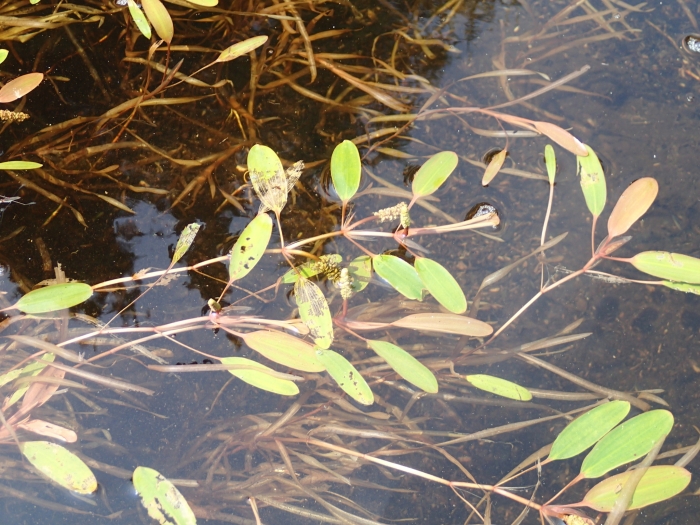Ribbonleaf Pondweed
(Potamogeton epihydrus)
Ribbonleaf Pondweed (Potamogeton epihydrus)
/
/

© Rob Foster
CC BY 4.0
Image By:
© Rob Foster
Recorded By:
Copyright:
CC BY 4.0
Copyright Notice:
Photo by: © Rob Foster | License Type: CC BY 4.0 | License URL: http://creativecommons.org/licenses/by/4.0/ | Uploader: rob21 | Publisher: iNaturalist |

























Estimated Native Range
Summary
Potamogeton epihydrus, commonly known as Ribbonleaf Pondweed, is a perennial aquatic herb native to a variety of freshwater habitats across North America, including the northeastern United States, southeastern Canada, and the Pacific seaboard. It is typically found in shallow, slow-moving or still waters such as ponds, lakes, and streams, often in oligotrophic conditions where the water is low in nutrients. Ribbonleaf Pondweed can grow in both soft and hard water environments, adapting to a range of aquatic conditions.
Ribbonleaf Pondweed is characterized by its narrow, ribbon-like submerged leaves, which are an adaptation to the aquatic environment. During the flowering season, which occurs in the summer, it produces small, inconspicuous greenish spikes of flowers that emerge above the water surface. While not showy, these flowers are important for the plant’s reproduction. In cultivation, Ribbonleaf Pondweed is valued for its ability to oxygenate water and provide habitat for aquatic wildlife. It is used in water gardens, ponds, and for natural water treatment systems. This plant prefers full sun to part shade and requires an aquatic setting to thrive. It is generally low-maintenance once established in a suitable water body. However, care should be taken as it can become overly abundant in ideal conditions, potentially outcompeting other aquatic plants.CC BY-SA 4.0
Ribbonleaf Pondweed is characterized by its narrow, ribbon-like submerged leaves, which are an adaptation to the aquatic environment. During the flowering season, which occurs in the summer, it produces small, inconspicuous greenish spikes of flowers that emerge above the water surface. While not showy, these flowers are important for the plant’s reproduction. In cultivation, Ribbonleaf Pondweed is valued for its ability to oxygenate water and provide habitat for aquatic wildlife. It is used in water gardens, ponds, and for natural water treatment systems. This plant prefers full sun to part shade and requires an aquatic setting to thrive. It is generally low-maintenance once established in a suitable water body. However, care should be taken as it can become overly abundant in ideal conditions, potentially outcompeting other aquatic plants.CC BY-SA 4.0
Plant Description
- Plant Type: Herb
- Height: 1.6-3.3 feet
- Width: 1-3 feet
- Growth Rate: Rapid
- Flower Color: Green
- Flowering Season: Summer, Fall
- Leaf Retention: Deciduous
Growth Requirements
- Sun: Full Sun, Part Shade
- Water: High
- Drainage: Standing
Common Uses
Low Maintenance, Water Garden
Natural Habitat
A variety of freshwater habitats across North America, including ponds, lakes, and streams, often in oligotrophic conditions
Other Names
Common Names: Ribbonleaf Pondweed, Nuttall’s Pondweed, Ribbon-Leaved Pondweed
Scientific Names: , Potamogeton epihydrus, Potamogeton cayugensis, Potamogeton claytonii, Potamogeton epihydrus subsp. nuttallii, Potamogeton epihydrus var. cayugensis, Potamogeton epihydrus var. epihydrus, Potamogeton epihydrus var. nuttallii, Potamogeton epihydrus var. ramosus, Potamogeton epihydrus var. typicus
GBIF Accepted Name: